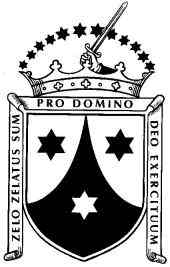|
Burriscarra Abbey
Burriscarra Abbey is a former Carmelite Priory and National Monument located in County Mayo, Ireland. Location Burriscarra Abbey is located 1.6 km (1 mile) west of Carnacon, on the northeast of Lough Carra. History Adam de Staunton, whose family later assumed the name MacEvilly (Mac Mhilidh) founded the Abbey for the Carmelites. The abbey was abandoned before 1383 and in 1413 it was transferred by Pope Gregory XII to the Order of Saint Augustine who already had a friary in Ballinrobe. It was burned in 1430 but repaired soon after. It was usurped by the Cromwellians and in 1607 James I granted the land to John King, who sold it to Oliver Bowen in 1608. Later Charles II granted it to John King and then Sir Henry Lynch whose family kept it until the 19th century. It now belongs to the Office of Public Works who restored it in the 1960s. The current remains are largely of the 15th century. Building The lower church has some 13th century niches but much of it was rebuilt ... [...More Info...] [...Related Items...] OR: [Wikipedia] [Google] [Baidu] |
Carmelites
, image = , caption = Coat of arms of the Carmelites , abbreviation = OCarm , formation = Late 12th century , founder = Early hermits of Mount Carmel , founding_location = Mount Carmel , type = Mendicant order of pontifical right , status = Institute of Consecrated Life , membership = 1,979 (1,294 priests) as of 2017 , leader_title = Motto , leader_name = la, Zelo zelatus sum pro Domino Deo exercituumEnglish: ''With zeal have I been zealous for the Lord God of hosts'' , leader_title2 = General Headquarters , leader_name2 = Curia Generalizia dei CarmelitaniVia Giovanni Lanza, 138, 00184 Roma, Italia , leader_title3 = Prior General , leader_name3 = Mícéal O'Neill, OCarm , leader_title4 = Patron saints , leader_name4 = Our Lady of Mt. Carmel, Elijah , parent_organization = Catholic Church , website = ... [...More Info...] [...Related Items...] OR: [Wikipedia] [Google] [Baidu] |
Office Of Public Works
The Office of Public Works (OPW) ( ga, Oifig na nOibreacha Poiblí) (legally the Commissioners of Public Works in Ireland) is a major Irish Government agency, which manages most of the Irish State's property portfolio, including hundreds of owned and rented Government offices and police properties, oversees National Monuments and directly manages some heritage properties, and is the lead State engineering agency, with a special focus on flood risk management. It lies within the remit of the Minister for Public Expenditure and Reform, with functions largely delegated to a Minister of State at the Department of Public Expenditure and Reform with special responsibility for the Office. The OPW has a central role in driving the Government's property asset management reform process, both in respect of its own portfolio and that of the wider public service. The agency was initially known as Board of Works, a title inherited from a preceding body, and this term is still sometimes e ... [...More Info...] [...Related Items...] OR: [Wikipedia] [Google] [Baidu] |
Religion In County Mayo
Religion is usually defined as a social- cultural system of designated behaviors and practices, morals, beliefs, worldviews, texts, sanctified places, prophecies, ethics, or organizations, that generally relates humanity to supernatural, transcendental, and spiritual elements; however, there is no scholarly consensus over what precisely constitutes a religion. Different religions may or may not contain various elements ranging from the divine, sacred things, faith,Tillich, P. (1957) ''Dynamics of faith''. Harper Perennial; (p. 1). a supernatural being or supernatural beings or "some sort of ultimacy and transcendence that will provide norms and power for the rest of life". Religious practices may include rituals, sermons, commemoration or veneration (of deities or saints), sacrifices, festivals, feasts, trances, initiations, funerary services, matrimonial services, meditation, prayer, music, art, dance, public service, or other aspects of human culture ... [...More Info...] [...Related Items...] OR: [Wikipedia] [Google] [Baidu] |
Augustinian Monasteries In The Republic Of Ireland
Augustinian may refer to: * Augustinians, members of religious orders following the Rule of St Augustine *Augustinianism, the teachings of Augustine of Hippo and his intellectual heirs *Someone who follows Augustine of Hippo *Canons Regular of Saint Augustine also called "Augustinian Canons" or "Austin Canons" *Order of Saint Augustine, a mendicant order, also called "Augustinian Friars" or "Austin Friars" See also *Augustine (other) Saint Augustine of Hippo (354–430), was a Church Father. Augustine may also refer to: People * Augustine (actor) (1955–2013), Malayalam film actor * Augustine of Canterbury (died 604), the first Archbishop of Canterbury * Saint Augustine ... * {{disambiguation Augustine of Hippo ... [...More Info...] [...Related Items...] OR: [Wikipedia] [Google] [Baidu] |
Carmelite Monasteries In The Republic Of Ireland
, image = , caption = Coat of arms of the Carmelites , abbreviation = OCarm , formation = Late 12th century , founder = Early hermits of Mount Carmel , founding_location = Mount Carmel , type = Mendicant order of pontifical right , status = Institute of Consecrated Life , membership = 1,979 (1,294 priests) as of 2017 , leader_title = Motto , leader_name = la, Zelo zelatus sum pro Domino Deo exercituumEnglish: ''With zeal have I been zealous for the Lord God of hosts'' , leader_title2 = General Headquarters , leader_name2 = Curia Generalizia dei CarmelitaniVia Giovanni Lanza, 138, 00184 Roma, Italia , leader_title3 = Prior General , leader_name3 = Mícéal O'Neill, OCarm , leader_title4 = Patron saints , leader_name4 = Our Lady of Mt. Carmel, Elijah , parent_organization = Catholic Church , website = ... [...More Info...] [...Related Items...] OR: [Wikipedia] [Google] [Baidu] |
Cloister
A cloister (from Latin ''claustrum'', "enclosure") is a covered walk, open gallery, or open arcade running along the walls of buildings and forming a quadrangle or garth. The attachment of a cloister to a cathedral or church, commonly against a warm southern flank, usually indicates that it is (or once was) part of a monastic foundation, "forming a continuous and solid architectural barrier... that effectively separates the world of the monks from that of the serfs and workmen, whose lives and works went forward outside and around the cloister." Cloistered (or ''claustral'') life is also another name for the monastic life of a monk or nun. The English term ''enclosure'' is used in contemporary Catholic church law translations to mean cloistered, and some form of the Latin parent word "claustrum" is frequently used as a metonymic name for ''monastery'' in languages such as German. History of the cloister Historically, the early medieval cloister had several antecedents: ... [...More Info...] [...Related Items...] OR: [Wikipedia] [Google] [Baidu] |
Piscina
A piscina is a shallow basin placed near the altar of a church, or else in the vestry or sacristy, used for washing the communion vessels. The sacrarium is the drain itself. Anglicans usually refer to the basin, calling it a piscina. For Roman Catholics, a sacrarium is “special sink used for the reverent disposal of sacred substances. This sink has a cover, a basin, and a special pipe and drain that empty directly into the earth, rather than into the sewer system” (USCCB, Built of Living Stones, 236). Precious or sacred items are disposed of, when possible, by returning them to the ground. They are in some cases used to dispose of materials used in the sacraments and water from liturgical ablutions. They are found in Roman Catholic, Anglican, and Lutheran churches, and a similar vessel is used in Eastern Orthodox churches. History The ''piscina'' is a Latin word originally applied to a fish pond, and later used for natural or artificial pools for bathing, and also for a ... [...More Info...] [...Related Items...] OR: [Wikipedia] [Google] [Baidu] |
Tracery
Tracery is an architectural device by which windows (or screens, panels, and vaults) are divided into sections of various proportions by stone ''bars'' or ''ribs'' of moulding. Most commonly, it refers to the stonework elements that support the glass in a window. The term probably derives from the tracing floors on which the complex patterns of windows were laid out in late Gothic architecture. Tracery can also be found on the interior of buildings and the exterior. There are two main types: plate tracery and the later bar tracery. Honour, H. and J. Fleming, (2009) ''A World History of Art''. 7th edn. London: Laurence King Publishing, p. 948. The evolving style from Romanesque to Gothic architecture and changing features, such as the thinning of lateral walls and enlarging of windows, led to the innovation of tracery. The earliest form of tracery, called plate tracery, began as openings that were pierced from a stone slab. Bar tracery was then implemented, having derived from ... [...More Info...] [...Related Items...] OR: [Wikipedia] [Google] [Baidu] |
Arcade (architecture)
An arcade is a succession of contiguous arches, with each arch supported by a colonnade of columns or piers. Exterior arcades are designed to provide a sheltered walkway for pedestrians. The walkway may be lined with retail stores. An arcade may feature arches on both sides of the walkway. Alternatively, a blind arcade superimposes arcading against a solid wall. Blind arcades are a feature of Romanesque architecture that influenced Gothic architecture. In the Gothic architectural tradition, the arcade can be located in the interior, in the lowest part of the wall of the nave, supporting the triforium and the clerestory in a cathedral, or on the exterior, in which they are usually part of the walkways that surround the courtyard and cloisters. Many medieval arcades housed shops or stalls, either in the arcaded space itself, or set into the main wall behind. From this, "arcade" has become a general word for a group of shops in a single building, regardless of the architect ... [...More Info...] [...Related Items...] OR: [Wikipedia] [Google] [Baidu] |
Aisle
An aisle is, in general, a space for walking with rows of non-walking spaces on both sides. Aisles with seating on both sides can be seen in airplanes, certain types of buildings, such as churches, cathedrals, synagogues, meeting halls, parliaments and legislatures, courtrooms, theatres, and in certain types of passenger vehicles. Their floors may be flat or, as in theatres, stepped upwards from a stage. Aisles can also be seen in shops, warehouses, and factories, where rather than seats, they have shelving to either side. In warehouses and factories, aisles may be defined by storage pallets, and in factories, aisles may separate work areas. In health clubs, exercise equipment is normally arranged in aisles. Aisles are distinguished from corridors, hallways, walkways, footpaths, pavements (''American English'' sidewalks), trails, paths and (enclosed) "open areas" by lying between other open spaces or areas of seating, but enclosed within a structure. Typical physica ... [...More Info...] [...Related Items...] OR: [Wikipedia] [Google] [Baidu] |
Niche (architecture)
A niche ( CanE, or ) in Classical architecture is an exedra or an apse that has been reduced in size, retaining the half-dome heading usual for an apse. Nero's Domus Aurea (AD 64–69) was the first semi-private dwelling that possessed rooms that were given richly varied floor plans, shaped with niches and exedrae; sheathed in dazzling polished white marble, such curved surfaces concentrated or dispersed the daylight. A is a very shallow niche, usually too shallow to contain statues, and may resemble a blind window (a window without openings) or sealed door. (Compare: blind arcade) The word derives from the Latin (), via the French . The Italian '' nicchio'' () may also be involved, OED, "Niche" as the traditional decoration for the top of a niche is a scallop shell, as in the illustration, hence also the alternative term of "conch" for a semi-dome, usually reserved for larger exedra. In Gothic architecture, a niche may be set within a tabernacle framing, like a richly ... [...More Info...] [...Related Items...] OR: [Wikipedia] [Google] [Baidu] |









